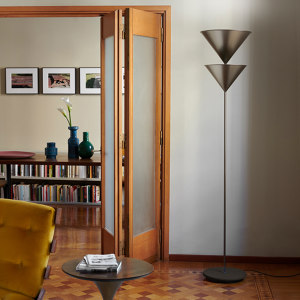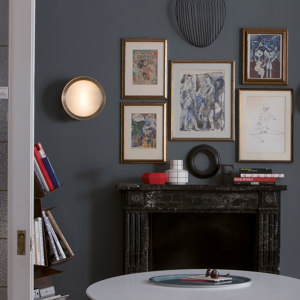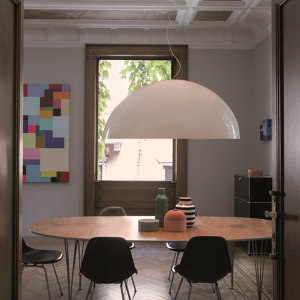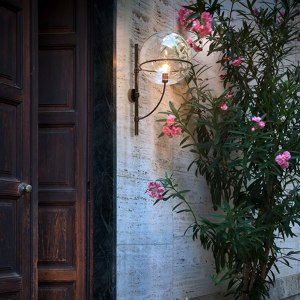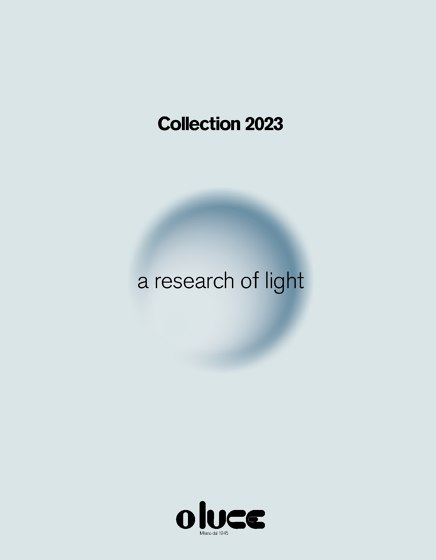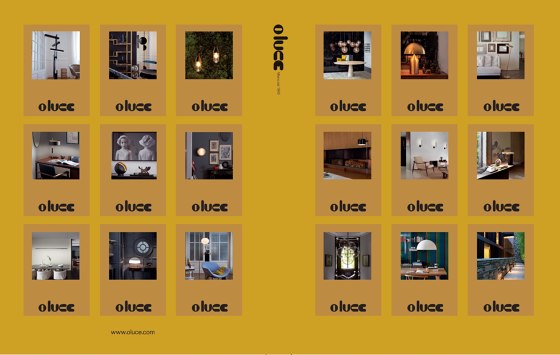About Oluce
MORE ABOUT OLUCE
Established in 1945 by the master Giuseppe Ostuni, Oluce is the oldest Italian lighting design company that is still active today. In fact, before the war there existed only Gino Sarfatti's Arteluce, which disappeared in the late '90s, while 1948 saw the birth of Azucena and Lamperti, followed by Arredoluce and Stilnovo in 1950. But for many years it was chiefly Arteluce, Azucena and Oluce that dominated the Italian scene, creating a hub for the designers - strongly engaged first in the reconstruction and later in the birth of series production - who animated the Milanese forum: Vittoriano Viganò and BBPR, Gigi Caccia Dominioni and Ignazio Gardella, Marco Zanuso and Joe Colombo.
As early as 1951, Oluce registered a success at the IX Triennale, in the lighting section directed by Achille, Livio and Pier Giacomo Castiglioni, with an indirect incandescent luminator designed by Franco Buzzi. The company, as it was during that period, quickly reached an international public through Domus magazine, thanks to the vision of Gio Ponti. Its '50s catalogues confirm the individuality of Ostuni's work, which has yet to be fully examined in critical key. Tito Agnoli achieved an important success in 1955, with mentions at the second "Compasso d'oro" for two of his lamps (a floor lamp, mod. 363, and a special model for bookshelves). In 1956 two other mentions followed in rapid succession: for a truly remarkable table lamp in laminar polyvinyl, and for a pendant light (mod.4461) with double perspex shade. And then there was the ground-breaking "Agnoli" model (255 / 387), a spot light supported on a slender stem, which in 1954 marked the decline of lampshades and the rise of highly simplified floor lamps, even for domestic lighting.
In addition to Agnoli, Ostuni's collaborators included: Forti, the forgotten advocate of a new living style for the Milanese middle class, as well as Arnaboldi, Monti and Minale. But it was only at the end of the decade, thanks to the encounter with Joe and Gianni Colombo, that Oluce took a more pronounced revolutionary slant. The Colombo brothers (subsequently only Joe pursued his incisive sorties into the world of objects, while Gianni devoted himself to the fine arts) were seeking a receptive environment for their audacious designs. First there was the "Acrilica" table lamp (mod. 281), included in the Oluce catalogue as of 1962: a very thick perspex curve through which the light appears to climb, exemplifying both a possible meeting point between art and design, as well as an elegant use of new materials. A gold medal winner at the XIII Triennale, where Joe Colombo also won two silver medals (for the "Combi-Center" and the "Mini-Kitchen"), the "Acrilica" consolidated Joe Colombo as one of the great designers of the day.
Meanwhile, in 1963, Marco Zanuso created one of Oluce's forgotten masterpieces, in production as of 1965: the model 275 table lamp with large white perspex swivel shade on a white enamelled metal base. And it was once again a new material, the "Fresnel Lens" pressed glass, which inspired Joe Colombo's 1964/66 family of weatherproof outdoor "Fresnel" lights, with a painted metal base and shade retained by steel clips. This was followed in 1965 by the "Spider" group, in which a single lighting fixture, designed for a special horizontal spot light, was assembled - thanks to a melamine joint -- in a variety of situations (home/office) and on different supports (table/floor/wall/ ceiling), thus coining the concept of a "family" of lamps. The stamped plate finished with white, black, orange or brown baking paint, sliding along a polished chrome stem, seemed a foretaste of the future. In 1967 it won the first "Compasso d'oro" award for Oluce, and in 1972 it appeared at the unforgettable New York exhibition "Italy: the new domestic landscape".
But in 1967 Colombo had already moved on, creating his Coupè, a curved stem of considerable size supporting an elegant semi-cylindrical shade, exhibited at the MoMa in New York. In 1968 the Coupè light won the "International Design Award" of Chicago's American Institute of Interior Designers. Finally, 1970 saw the birth of the "Halogen light", which went into production in 1972, one year after the premature death of Joe Colombo, and was therefore named "Colombo" in his honour. The first indoor halogen light to appear on the market, it became an unsurpassed icon of a design that is both functional and contemporary. In the meantime, a new and important era had begun at Oluce, coinciding with the transfer of ownership from Ostuni to the Verderi family, and dominated by one of the great masters of Italian design: Vico Magistretti. For many years, Magistretti was art director and chief designer of the company, conferring his unmistakable stamp and a legacy of worldwide recognition. Kuta, Lester, Nara, Idomeneo, Pascal, Dim, Sonora, Snow, and especially Atollo - all became names that instantly called to mind the corresponding product. Atollo even became a sort of template, a graphic silhouette that immediately rendered the concept of a "lamp".
Atollo - essentially inimitable though copied around the world, winner of the "Compasso d'oro" in 1979, featured in the permanent collections of all the leading design and decorative arts museums - has thus become much more than just a lamp: it is a legend. Its secret probably lies in the geometry of its forms: the cone on the cylinder, all surmounted by the hemisphere. A luminous sculpture to which nothing can be added, and from which nothing can be taken away. In the meantime, Magistretti's presence protected Oluce from superficial forays into post-modernism, as confirmed by the various designs by Bruno Gecchelin included in the catalogue.
At the start of the '90s, it was the rigour of the emergent Swiss designer Hannes Wettstein which characterised the company's style. Some examples are Wettstein's "Soirèe" model, a slender assembly of aluminium and makrofol, as well as Riccardo Dalisi's ironically provocative Sister and Zefiro models. Finally, in 1995 Oluce took a different tack under the art direction of Marco Romanelli, which bolstered its international success and the collection's critical acclaim. The new formula put the focus on expressing highly diverse personal idioms, and in particular those of leading contemporary designers, such as the Englishman Sebastian Bergne, the Swiss Hans Peter Weidmann, and the Italians Laudani/Romanelli. In 1997 the "Estela" lamp was the word's first industrially-produced object designed by the brothers Fernando and Humberto Campana, poetic narrators of their far-away Brazil. In 2000, the "Nuvola" series marked the start of Toni Cordero's collaboration with Oluce. One of the leading Italian architects of his generation, Cordero imposed his vision through the use of utterly disruptive and unconventional forms.
But this is no longer the history of Oluce, but rather of Oluce's contribution to contemporary design.
Established in 1945 by the master Giuseppe Ostuni, Oluce is the oldest Italian lighting design company that is still active today. In fact, before the war there existed only Gino Sarfatti's Arteluce, which disappeared in the late '90s, while 1948 saw the birth of Azucena and Lamperti, followed by Arredoluce and Stilnovo in 1950. But for many years it was chiefly Arteluce, Azucena and Oluce that...
MORE ABOUT OLUCE
Collections by Oluce
Catalogues by Oluce
-
2024
english, italiano

Collection 2024
Oluce
pages
-
2023
english, italiano

CATALOGUE 2023
Oluce
24 pages
-
2020
english, italiano

CATALOGUE 2020
Oluce
128 pages


